Recent Articles
Popular Makes
Body Types
2018 Audi RS 3 vs. 2018 BMW M2: Which Is Best?
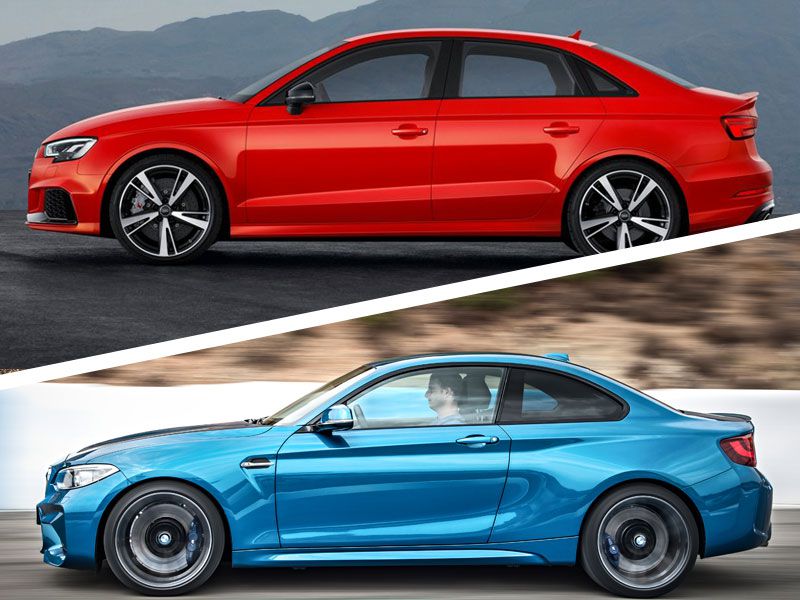
Audi RS3 vs BMW M2 exterior profile
Deciding between the 2018 Audi RS 3 and 2018 BMW M2 can’t be solved just by comparing the numbers. The RS 3 is all-new for 2018 and has not been sold in the United States until now, so the Audi has novelty on its side as well as all its other attributes.
The M2 is seen as something as close as modern-day cars can get to the original M3 of the mid-1980s — quick, nimble, well-balanced, focused on the driving experience. And BMW’s M cars in general have a formidable reputation. We’ll be sifting through the facts, so come and enjoy the journey with us.
Pricing
Both the RS 3 and M2 represent relatively affordable access to brand-new premium performance machines. The 2018 Audi RS 3 starts at $55,875 before any options. This includes all the hardware required for this highest-performance version of the small A3 sedan, such as the powerful engine, beefed-up brakes, sport seats covered in fine leather, 19-inch alloy wheels, and many other assets.
The 2018 BMW M2 begins at $55,495. That's less expensive than the Audi, but it doesn’t have all-wheel drive (which may be a good thing) and has a manual transmission as standard — we’ll have more to say about that in a moment. Otherwise, we’re looking at a similar inventory of equipment.
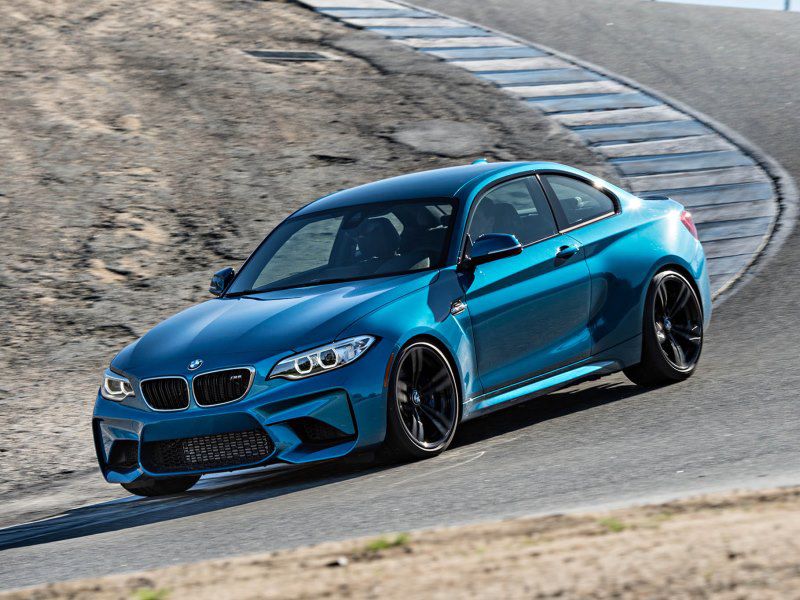
Photo by BMW
Engines
The engines in both cars are special in their own way. It’s rare to find a five-cylinder engine, but this configuration is part of Audi’s motorsport heritage (the Audi Quattro rally cars of the 1980s, for example) and have a distinct sound. The RS 3’s unit is turbocharged, producing 400 horsepower and 354 lb-ft of torque from 2.5 liters of displacement.
The inline-six configuration has been a BMW hallmark for decades. The M2’s 3.0-liter version develops 365 hp and 343 lb-ft of torque. It also has an overboost function where maximum torque is increased temporarily to 369 lb-ft. Despite its deficit in horsepower compared to the Audi, an inline-six is inherently smoother than an inline-five.
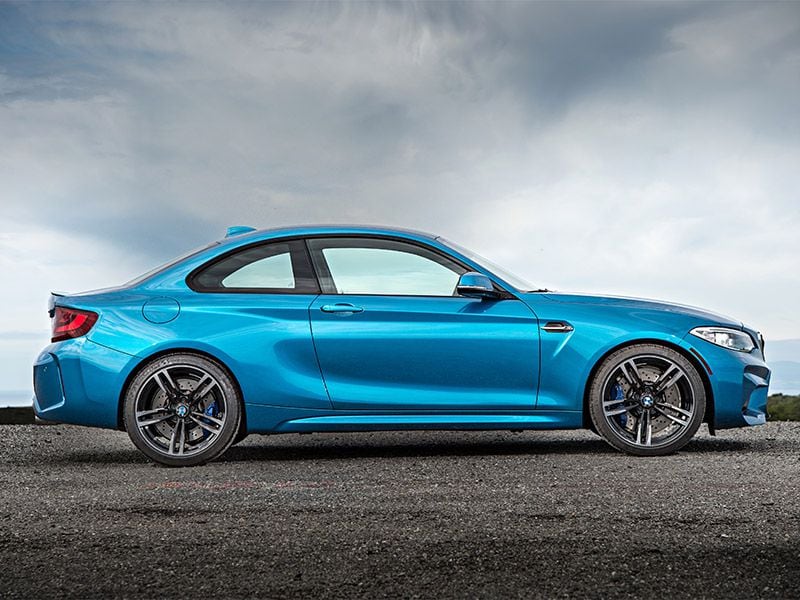
Photo by BMW
Transmissions
Purists tend to go for manual transmissions. There’s an undeniable joy to being this involved, shifting when you want, not when the computer dictates. The M2’s six-speed manual also has a rev-matching feature for cool blips on the downshift. However, the optional seven-speed dual-clutch automatic (technically an automated manual and costing $2,900) has paddle shifters, plus a launch mode that makes the car quicker in the sprint from standstill to 60 mph.
The RS 3 has a seven-speed dual-clutch setup as standard. In many ways, these transmissions are the best of both worlds, with fast, foolproof shifts and the option to leave it in D. They’re more economical, too.
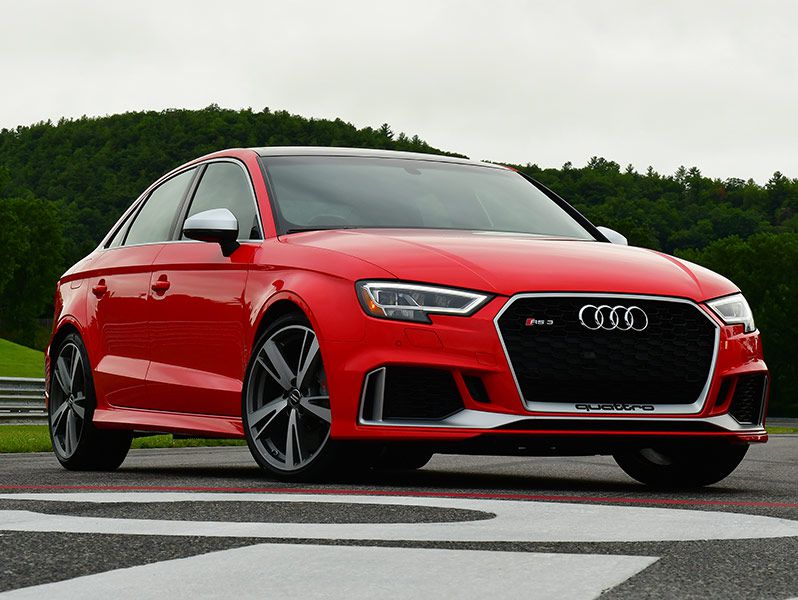
Photo by Audi
Performance
There used to be a technique for fast takeoffs with an all-wheel drive car. Now it’s just a question of selecting launch mode, flooring the throttle, and letting the software work it all out. Nevertheless, the RS 3 tackles zero to 60 mph in 3.9 seconds, which is pretty zippy. And it's faster than the M2 in any form. With the manual transmission, the M2 requires 4.3 seconds. The automatic shaves off 0.2 seconds.
For track rats, both cars offer an option to raise top speed. The RS 3’s Dynamic Plus package moves the meter from 155 mph to 174 mph. The M Driver’s package takes the M2 from 155 mph to 168 mph.
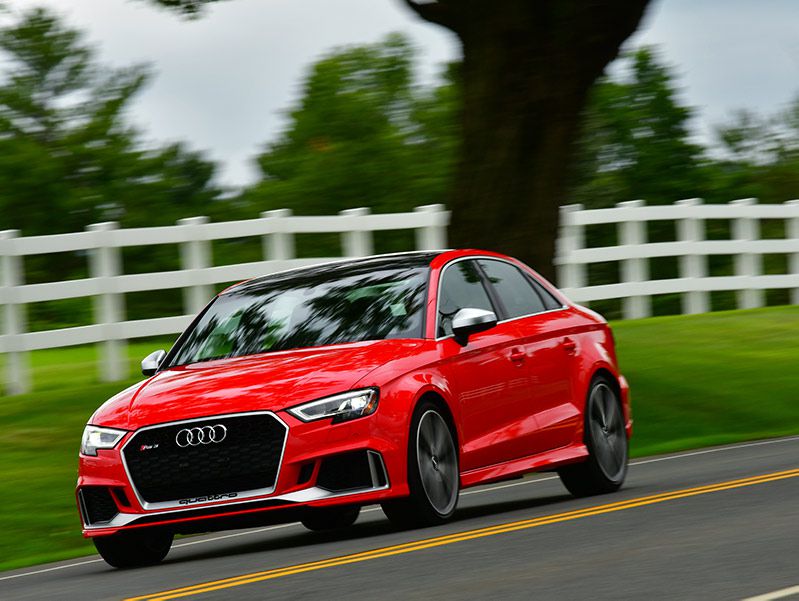
Photo by Audi
Handling
Here’s where the M2 demonstrates the advantage of rear-wheel drive over all-wheel drive. Combined with traction control settings that allow some leeway, the M2 can be coaxed into powerslides, which — if the driver can keep control and it’s all happening in an environment like a track — is wonderfully thrilling.
All-wheel drive doesn’t like to act this way. The software keeps trying to apportion drive to whichever wheels have the most grip. So if the back breaks away, the front wheels receive the most power. It also has a tendency for understeer, where the nose goes wide and the driver has to ease off the throttle to regain the line. It’s safe and predictable, but not so much fun.
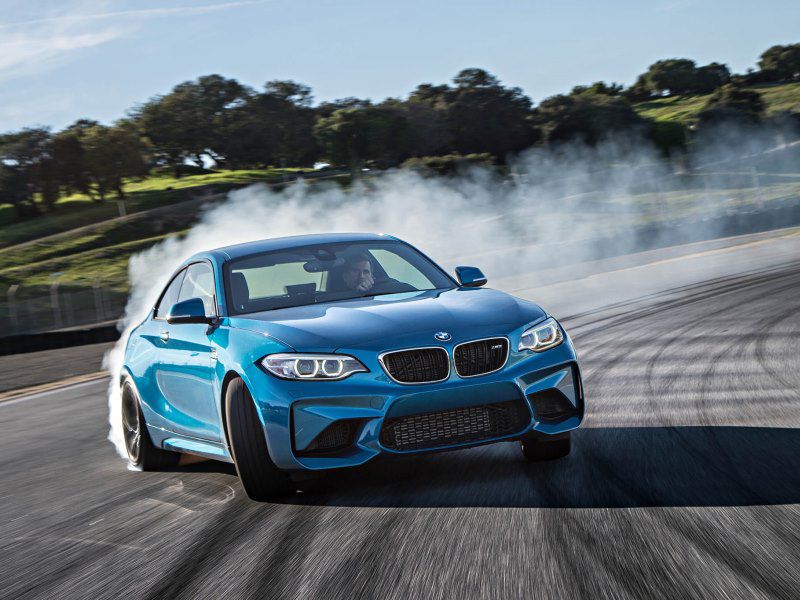
Photo by BMW
Equipment
The RS 3 comes standard with an adaptive suspension. Naturally, it’s calibrated to be on the sporty side, but there are selectable modes that go from fairly comfortable to track-worthy. A dedicated stiffer suspension is optional.
The M2 makes no concessions for the weekday commute. It’s set up purely for the enthusiast, not the weekend warrior. Another part of the M Driver’s package is a day’s tuition in high-performance driving. Both cars offer advanced driver aids, plus niceties like satellite radio and wi-fi. Apple CarPlay is standard in the Audi, along with Android Auto. The latter is not available at all in the M2, while the former is an extra $300. Meanwhile, the M2's Harman Kardon audio system is superb.
BMW M2
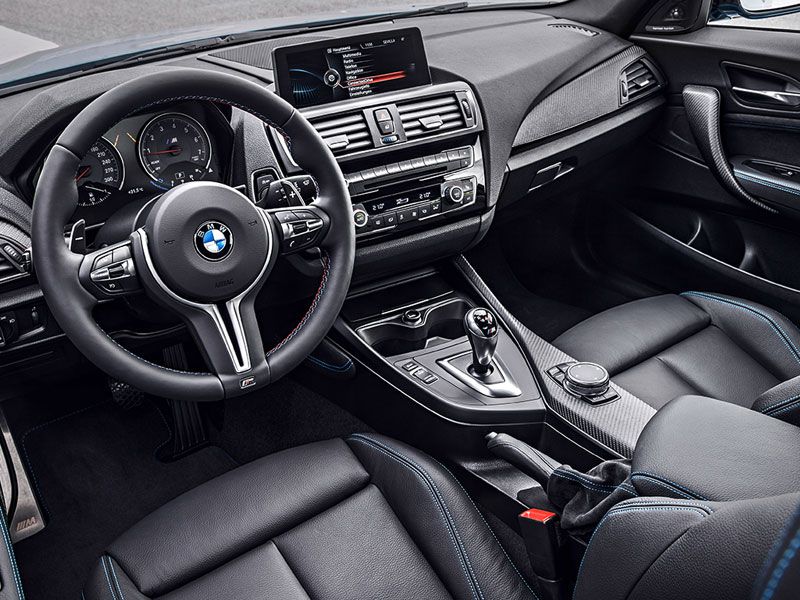
Photo by BMW
Technology
Audi’s Virtual Cockpit, a 12.3-inch configurable digital display that replaces the regular instrument cluster, is an option in the RS 3. But it’s well worth having. It can show all sorts of data, including navigation information, while learning to use it is quick and easy. Also optional is a touchpad that recognizes handwritten inputs. Blind-spot monitoring is standard.
The M2’s iDrive has evolved to become one of the better infotainment systems, with a user interface that’s often described as “intuitive.” Navigation with real-time traffic updates is standard; wireless device charging is optional as part of the Executive package.
: Tie
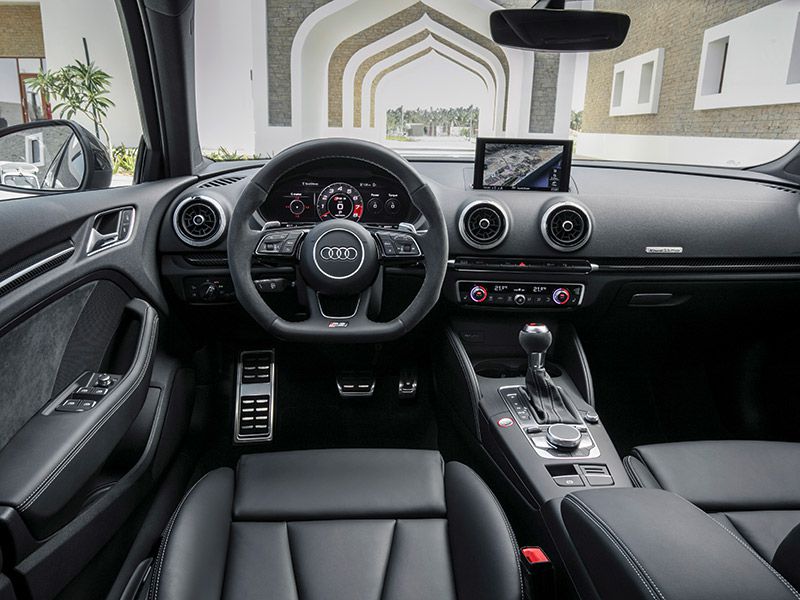
Photo by Audi
Comfort and Cargo
Each car’s ride quality is on the firm side, as it should be for a sporty machine. One major difference is that the Audi is a sedan and the BMW is a coupe. If rear passenger doors are necessary and multiple trips with more than two occupants are anticipated, then it’s a simple choice.
Both cars have sport front seats that prioritize support over outright comfort. They hold people in place even through fast corners. The RS 3 has eight-way manual adjustability and the M2 has 10-way power adjustment, so finding an ideal position is easy. If it matters, the RS 3’s trunk measures 10 cubic feet, the M2’s is 13.8.
Audi RS 3
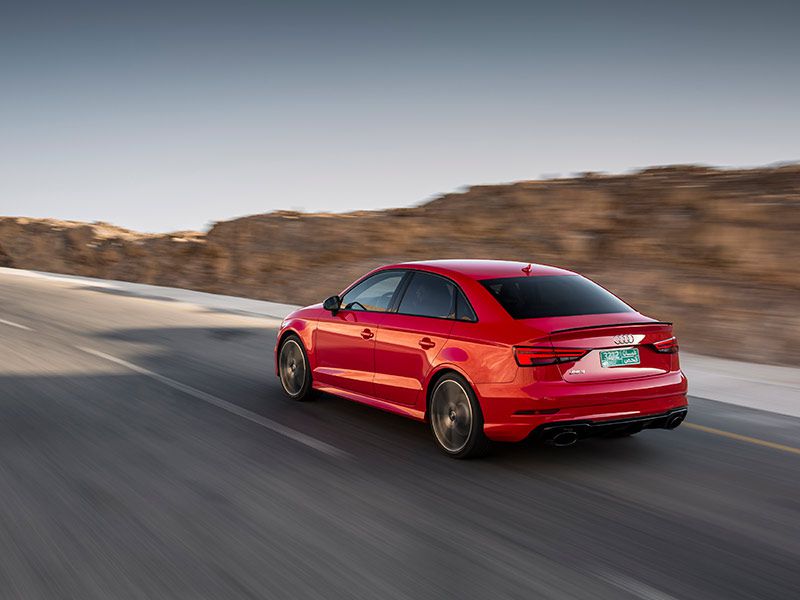
Photo by Audi
Exterior Design
Much of this is down to individual taste. Some will love the Audi’s time-defying style while others might consider it bland. The M2, meanwhile, could be seen as yet another BMW with the usual double grille and the obligatory Hofmeister kink at the rear side windows. But it’s the smaller details that might sway buyers.
For instance, check out the subtle bulge in the M2’s hood, signifying that this is no regular 2 Series. Look at the wider air intakes at the front of both cars, since turbocharged engines and braking systems subjected to hard use will need as much cooling as possible. There’s always something exciting and slightly intimidating about BMW M cars, including this M2.
: BMW M2
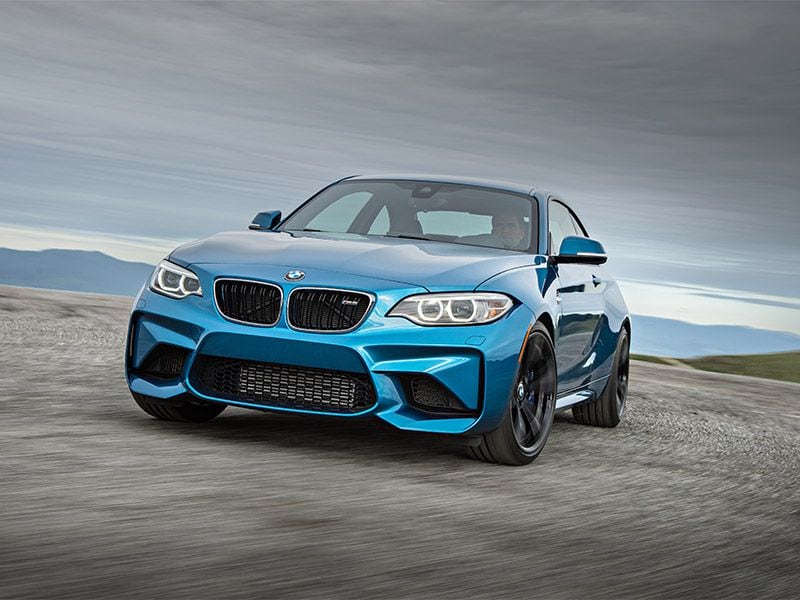
Photo by BMW
Interior Design
“Elegant, simple, and classy” is how to describe the RS 3’s cabin. The 7-inch infotainment display rising out of the dash is nerdy-cool. It also has the trendy flat-bottomed steering wheel, plus the RS 3 logo embossed into the leather of each front seat. The metallic accents aren’t too shiny.
Even though Audi generally gets more respect for its interiors than BMW, the M2 is similarly sophisticated yet business-like, although noisier. The 8.8-inch touchscreen adds a pleasing symmetry to the center console, the carbon fiber trim pieces add to the sporty air, and the ergonomics are spot-on. The plastics aren’t as high-rent as those in the RS 3, though.
Audi RS 3
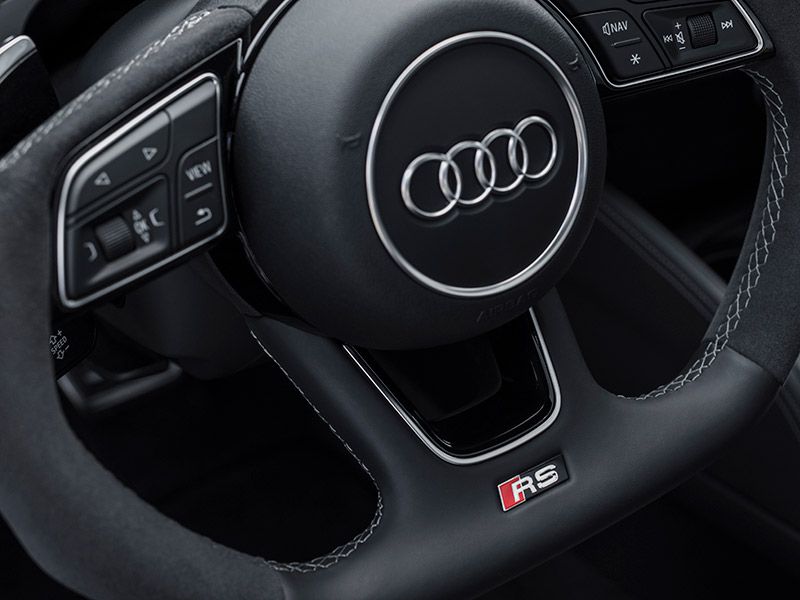
Photo by Audi